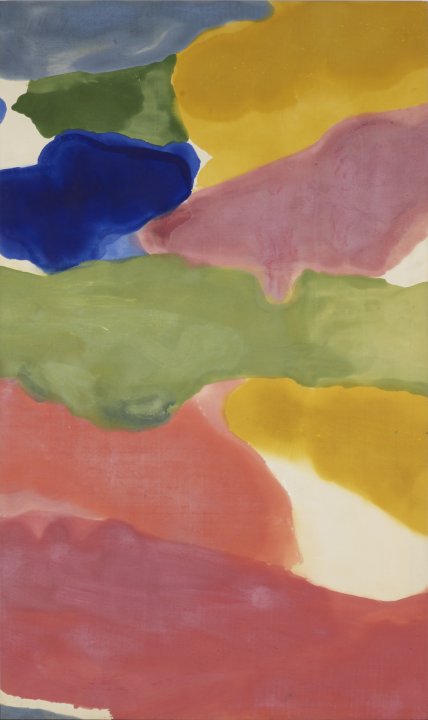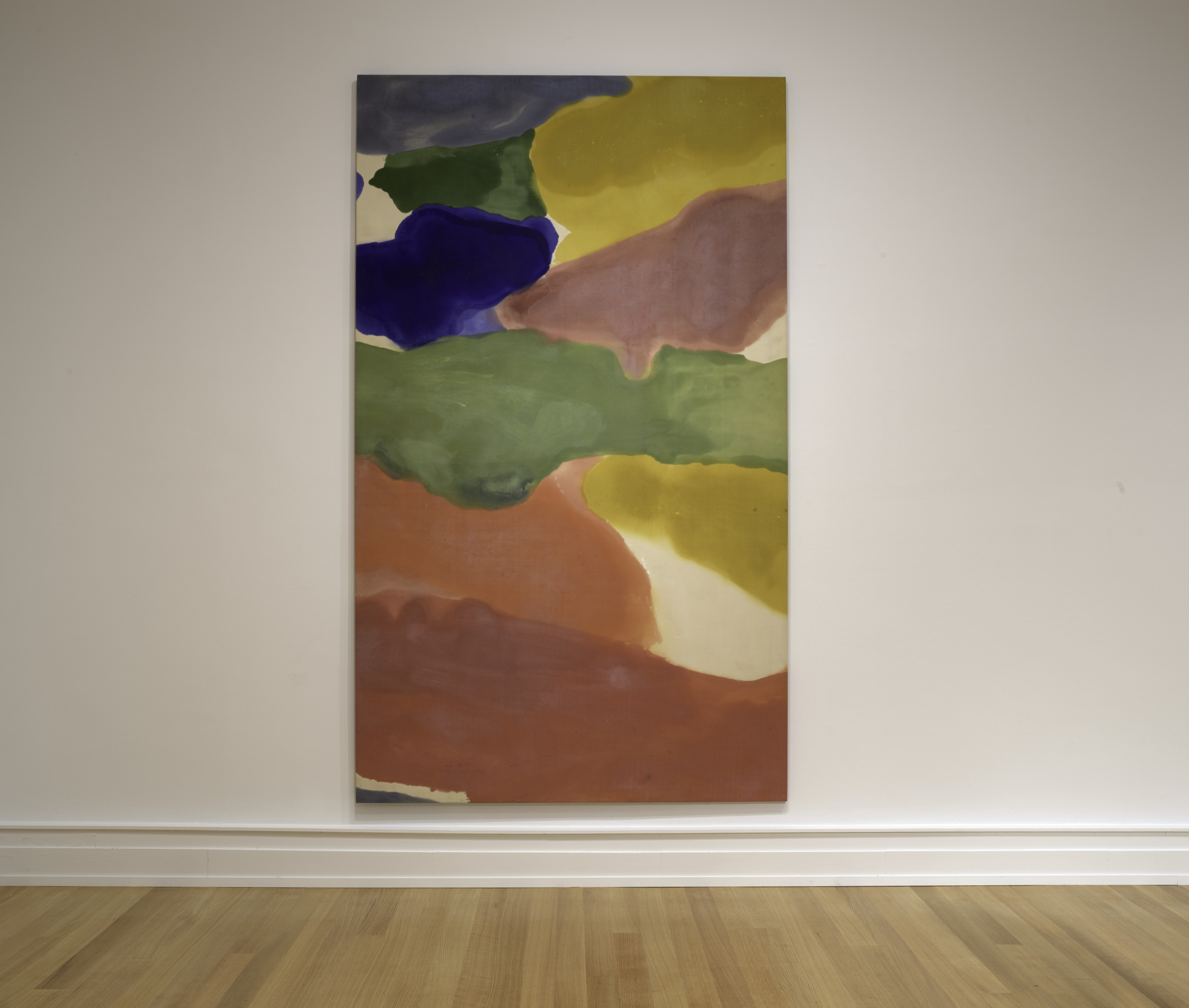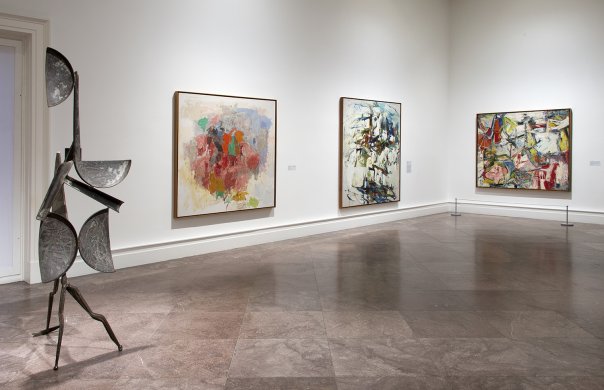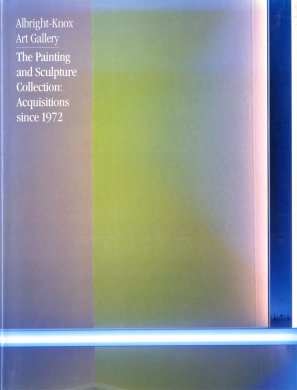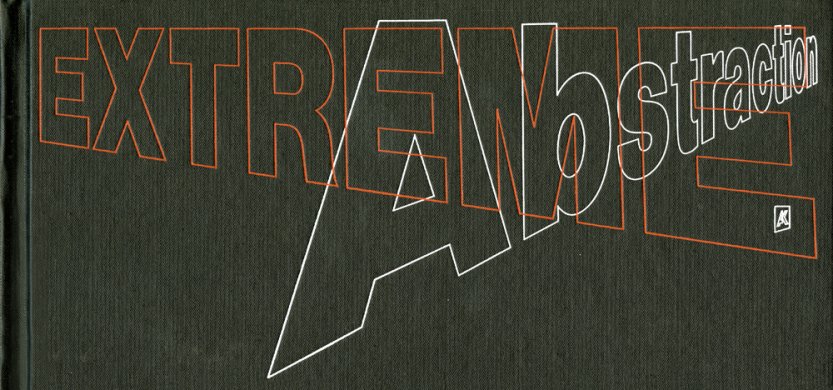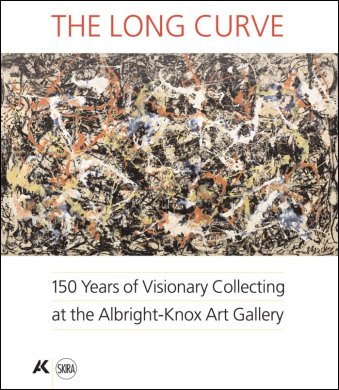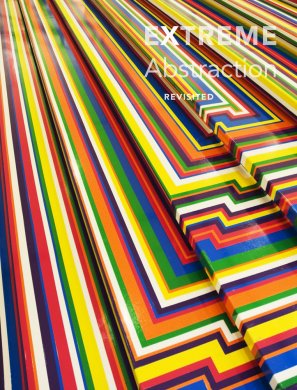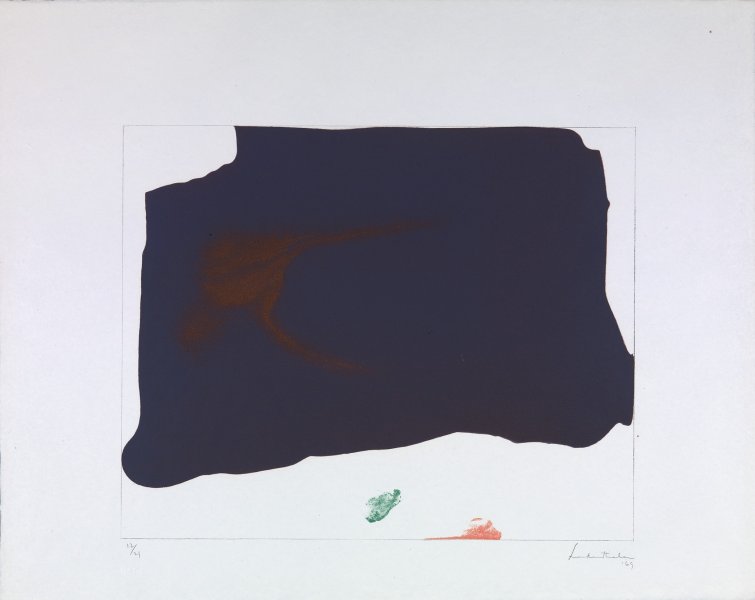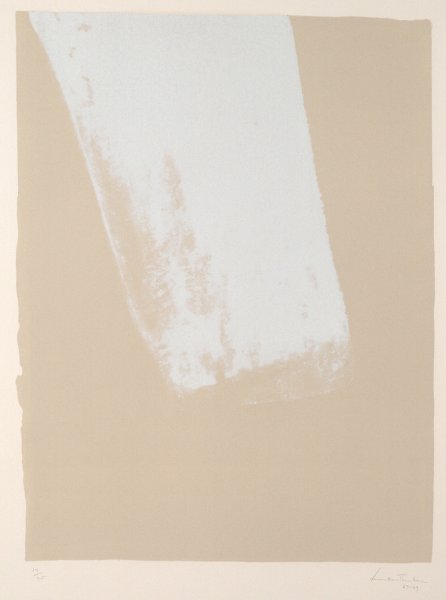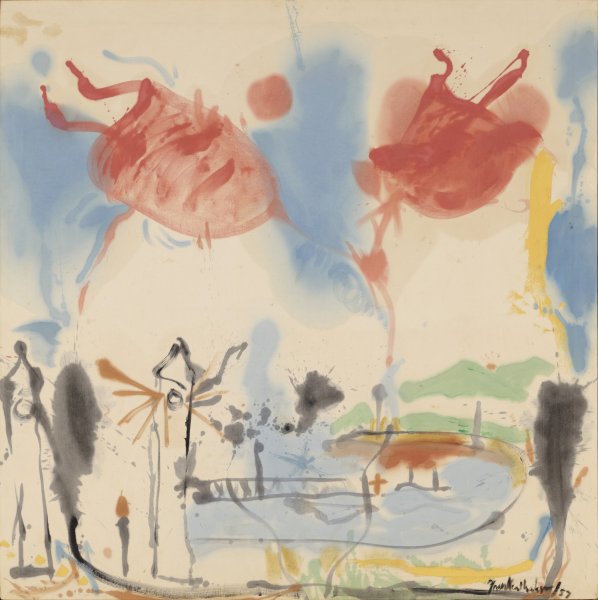Helen Frankenthaler
American, 1928-2011
Tutti-Frutti, 1966
Artwork Details
Materials
acrylic on canvas
Measurements
overall: 117 x 69 1/16 x 1 3/16 inches (297.18 x 175.42 x 3.02 cm)
Collection Buffalo AKG Art Museum
Credit
Gift of Seymour H. Knox, Jr., 1976
Accession ID
K1976:8
Helen Frankenthaler pioneered a unique “soak-stain” technique, which was initially inspired by the work of Jackson Pollock. Frankenthaler departed from Pollock’s style by thinning her paint and pouring it onto bare canvas, allowing it to soak in and fuse with the surface in ways only partially under her control. She called the areas in which her colors met “well-ordered collisions.” In this painting, those collisions are particularly luminous, and Frankenthaler named the work Tutti-Fruitti after a kind of confection, such as ice cream, that mixes numerous brightly colored fruit flavors. By developing her soak-stain technique while she was still in her early 20s, Frankenthaler secured her place in the New York art world. In 1953, Kenneth Noland and Morris Louis, two young artists who taught in Washington, D.C., came to New York to see the critic Clement Greenberg, who suggested they visit Frankenthaler’s studio. Her work’s effect on them was immediate and intense—when Noland and Louis returned to Washington, they began to develop their own staining techniques. Louis later called Frankenthaler “the bridge between Pollock and what was possible.”
Label from Sincerely Yours: Treasures of the Queen City, July 5–September 14, 2014
